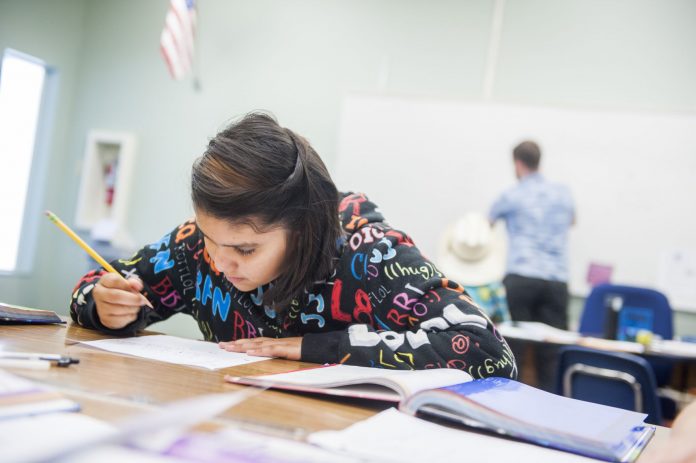There aren’t too many places left in the nation where a student can ride a horse to school, but San Benito County is one of them.
Colton Borland, 10, of Paicines, did just that over the past school year when he rode the mile between his home and Jefferson School, a functioning one-room schoolhouse south of Pinnacles National Park. It is one of the last remaining one-room schoolhouses in the county and among a dwindling number in the state.
Jefferson had just eight students this school year, said Alex Ferenz, the school’s teacher.
The National Center for Education Statistics doesn’t keep a precise count on the number of one-room schoolhouses in the nation, but does record the number of elementary schools with just one teacher. In 1909-10 school year, about 212,448 schools had just one teacher. More than 100 years later, the number has plummeted to just 193 schools in the 2013-14 school year.
“There’s way more pros than cons and the kids get way more individual time with a teacher,” Ferenz said. “I’d say the disadvantages are, there aren’t as many kids the same age to play with.”
Although Ferenz’s formal job description is that of a teacher, he is a self-proclaimed “jack of all trades” who has been known to fix light bulbs and snake toilets, in addition to his academic duties. Ferenz and his wife, Yukari, live on site, in accommodations provided as part of his contract.
When Ferenz first considered the job, his wife asked if there was electricity, gas and running water. Ferenz responded there was all of that, plus internet, he said. But the new location—where cellphones don’t get reception—took some getting used to. The rural campus is almost an hour drive from Hollister and King City, the teacher explained.
“I would say the biggest adjustment for living here was grocery shopping once a week,” he said.
Life moves at a different pace at the rural school. The playground overlooks a pasture of cows and some of the prettiest views of the Diablo Range Mountains in the county. During breaks, students talk to “Blue,” a bird that visits them at recess.
“We have a pet scrub-jay,” said Rosa Miramontes, 10, a fourth grader at the school.
Most of the students work on cattle or horse ranches, so Ferenz puts animals in the math problems to help the students relate to the material. When the students were studying outliers—or cases where one piece of significantly different data can skew the average—he talked about the weight of pigs at a county fair and how a very fat one could change the average, Ferenz said.
Many of the youth come from socioeconomically disadvantaged families. Almost 55 percent of the students fit this category, according to the school’s accountability report card for 2014-15, a filing required by California law. The students get books, pencils, paper and crayons provided by the school, Ferenz said. During the summer, each kid also takes home a Kindle, he said.
And while there is no school uniform, many of the students opt to wear their cowboy boots, donning tennis shoes only when they have to for physical education class.
“They say sneakers are uncomfortable,” the teacher said.
The school’s isolated, rural location also means many students attend class with siblings or cousins. Fourth grader Colton Borland, for instance, attends class with his younger and older sisters.
“I like that it’s a small school because then we get to know everyone,” Borland said.










